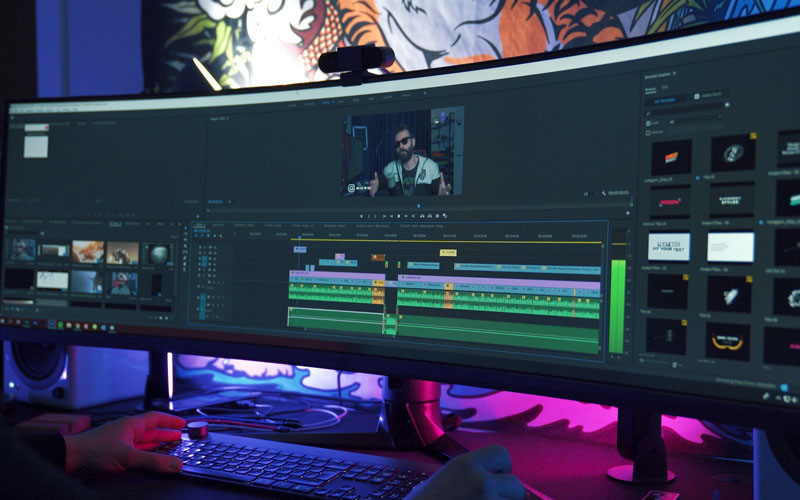
Content creation online is a hefty commitment to your audience. You’ll constantly be creating for them – for your blogs, email autoresponders, social networking posts, info products, free reports and more.
Everyone has a different set of skills they possess in how they communicate, but regardless of which one you feel you’ve mastered, you should always mix things up and provide a variety of formats for your audience.
You may find that your readers love it when you stray from your normal routine, such as sending them a video when they’re used to getting text from you (or vice versa). Multimedia formats don’t have to be complicated, expensive endeavors – there’s an easy way to use this approach for your audience.
Tips on Excelling with Text-Based Information
When you’re using written content to convey your message to your target audience, it’s important that you understand whether or not you have a true talent for writing. Some people simply don’t have the skill to communicate well with written text.
There’s no shame in that. The key is to be honest with yourself and know whether or not written information is something that you need to either outsource to another party or improve your skills with.
There are many marketers who outsource their content to freelance ghostwriters. This frees them up to handle other areas of their business. You can find freelance ghostwriters directly on their websites using a search engine, or on a site like Upwork or Fiverr.
On Upwork, ghostwriters will be bidding on your project and you can evaluate their talent in their portfolios. On Fiverr, each of the freelance writers has their own profile that outlines the details of working with them.
They will charge by the word and you can often see some of the examples of their previous writing. Before you hire someone, you can communicate with them directly and iron out the details of the work.
If you’re using text-based information, you want to create a unique slant. Many marketers worry that most information itself is stale and has already been done before. As long as you are offering a new take on the same old data, even merging two ideas together, it will serve as an interesting piece to your readers.
Don’t simply go to someone else’s website, copy their content and then rewrite it. This is a form of plagiarism that many marketers engage in that should always be avoided. Instead, take time to educate yourself about a topic and then write everything from scratch.
Make sure you’re writing in a conversational way, but not using slang that makes it even more difficult to read. You don’t want to be so stuffy that it feels like the reader is having to pour over a college dissertation or scientific journal.
A good way to get a feel for the kind of writing you should be doing is to read consumer magazines. Some people worry about the length of their content, but you should only write as much as the reader needs to understand the topic.
You want to avoid using fluff and filler in your writing. This is obvious to the reader and makes your content boring. Your text-based media should be information that is well researched and you should be sharing your take on the subject matter – never be afraid to voice your opinion.
You also want to polish your content before releasing it to your readers. You can do this by either hiring an editor to go over your content, or using sites like Grammarly to ensure you don’t have any glaring mistakes. If a customer brings it to your attention that there is a typo or error, simply thank them, correct the mistake, and upload a new file.
Adding Images to Enhance Your Message
If you’re a marketer using text, then you’ll also want to enlist the help of images to break up your content and keep the reader engaged. You don’t have to be a graphic designer in order to utilize images in your written content.
There are many ways to add images to your text or even to be shared on social media without additional text. You’ll want to add images to the posts you make on social networking sites like Facebook.
This helps them show up better in someone’s stream – it stands out. You can use them within your blog posts, so that they not only break up the text, but so the image also shows up whenever someone shares your blog post on social media.
Images can also be used within the body of your emails. So if you are promoting a product to your subscribers, you can include a picture of the product within the body of your email and even hyperlink the image.
Another way to use images is to break up the bulk of the content within your info products and reports that you give or sell to your audience. Where do you find images to use in your online marketing efforts?
The first place many marketers go is to stock sites that have a wide variety of niche images. There are free stock sites like Pixabay that you can use where you don’t have to give attribution to the creator of the image in most cases.
Always check the rules before using it. There are also paid stock sites that have a wider variety of better images that you can use in your online marketing efforts. Sometimes, you can find bulk sales of image packs for sites such as DepositPhotos or iStockPhotos.
Another way to secure images to use in your marketing is to take your own photos. If photography is not your strength, you may want to have someone take them for you or use an app that can help you spiff up the images for your marketing efforts.
If you’re in a niche where you’re showing someone how to do something online, then you may want to take screenshots and walk them through the process. You can embed these images into your report so that as they’re reading your instructions, they can see what you’re talking about.
Whenever you use images, you can also use tools that will allow you to add branding to them where you showcase your URL at the bottom of the image. You can also add quotes to the image that will motivate, inspire or inform your reader. There are free and paid tools that can do this, such as Canva.
Could a Podcast Help Boost Your Expertise?
Podcasting (audio) is a media format that is becoming more and more popular among the average consumer. There’s a rise in popularity in all demographics, including both genders and all age groups.
This is a media format that is viable for a wide variety of niche topics. Contrary to popular belief, podcasting does not require any special equipment. You may have seen videos of people podcasting in their own studio with professional sound equipment in a soundproof room.
It’s fine if that’s how you want to build your setup, but it’s not necessary. You can use any decent recording equipment, including a smartphone, and record an episode of your podcast for your target audience.
As long as you keep background noise to a minimum, preferably eliminated, your listeners will be able to hear your sound advice and enjoy the podcast. Podcasting does not require any start-up money.
You can use free sites such as Anchor.FM to host your show. In fact, they will also distribute your podcast to other places so that it increases your listener base. This is very convenient, fast, and easy.
The great thing about doing a podcast is that it doesn’t require you to work for hours on end. Most podcast shows average approximately 12 minutes, although some are shorter or longer in length.
There are some podcasts that are even 60 seconds long! Others last an hour or more. It’s up to you how long each episode should last, but you should always strategize about a month’s worth of shows in advance so that you know what you’re going to cover on each day.
Some podcasters stick to a strict format that is always the same length every time, while others talk for as long as is necessary. If you don’t want to do a podcast show all by yourself, you can partner with another marketer who is also in your niche.
Or, you can be the kind of podcaster who invites the guests on to your show to have discussions. Some podcasters also take calls from their listeners during the episode. Another thing you can do is allow your listeners to submit questions or commentary ahead of time that you discuss on your show.
One of the best things from an audience perspective about podcasts is that the audio allows them to multitask in their lives while they consume your information. They can listen to your podcast while commuting to and from work.
They can listen to it while they clean house or take a bath, while they exercise or simply relax. Even if you don’t want to launch an official podcast, you can still use audio recordings in your business whenever you feel like giving your subscribers something new and different.
Making Videos When You’re Nervous to Be on Camera
Many marketers avoid using video as part of their multimedia approach because they are nervous to be on camera. They may feel incapable for a variety of reasons. Some people are simply shy introverts that don’t want to put themselves out there.
There are others who genuinely feel as if they’re not pretty or handsome enough to compete with other niche marketers. Some even cite their age as the reason they won’t go online and put themselves on camera.
And of course, there are valid privacy reasons for many marketers to avoid making videos. The great thing about video marketing is that there are different ways to approach it so that you don’t have to worry about putting yourself on screen.
You can screen capture your computer and record something like a PowerPoint presentation as you speak. This would be perfect for someone who wants to approached their niche under a pen name and keep their real identity a secret.
You don’t need any fancy equipment to create videos for your online marketing efforts. True, there are some people who have complete studios with green screens, lighting and top-of-the-line equipment.
But all you really need is nothing more than a smart phone and a clean space to record your videos. If you want to use screen capturing software, you might look at something like Camtasia or the freeware version Camstudio.
Whenever you start recording your videos for your online marketing, don’t read from a script. This is a major mistake that many new marketers make because they don’t want to mess up their speech and have to start all over.
However, reading from a script makes your recording seem stiff, and you want it to seem very casual like they’re listening to and watching a friend. Instead of using a script to read, give yourself nothing more than a set of talking points.
These will be plenty to guide you through your thoughts and allow you to have a casual conversation with your viewer. These should be simple words or phrases to jog your memory and remind you of what you need to talk about.
Whenever you record a new video for your niche, you want to include a viable call to action at the end. Make sure that you encourage your viewers to share, like, subscribe, and comment. This type of engagement isn’t automatic, but when you prompt them to do it, they will often take action.
Live Interactions That Deliver Extra Value to Your Audience
One format that some new marketers put on the backburner until they’ve got some experience under their belt is a live event. Live events, such as webinars, are not reserved for those with guru status – anyone can host one and share value with their target audience.
Webinars help you connect with your audience. It’s sometimes better than just sending text-based content out to your subscribers because it gives them a way to interact with you.
It’s also a great way to get some social proof working for you, if attendees can see that others are onboard and seeing you as a leading expert. Some people might be skeptical of your webinar at first, due to the fact that marketers have used this format to spam their subscribers.
The key is to provide real value and if you’re going to promote, do it at the very end. Make sure you get feedback from attendees to see how they liked it, and take questions so they feel as if their time and attendance was important to you.






